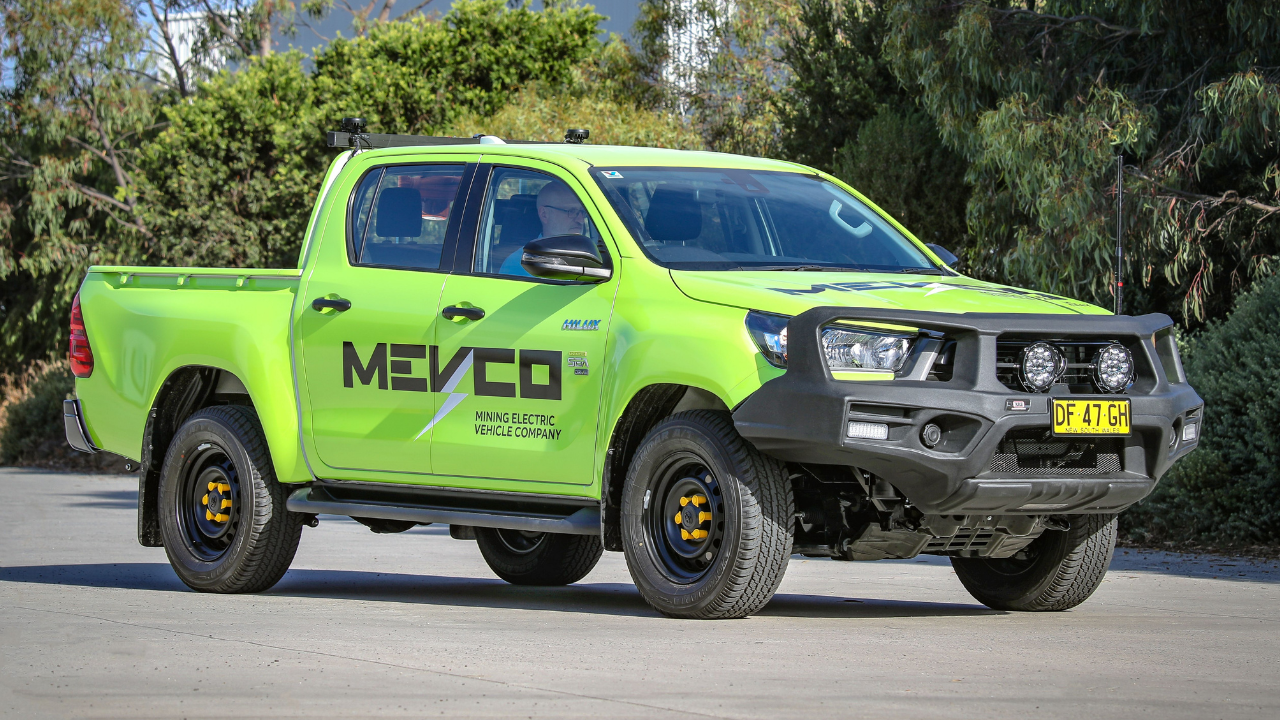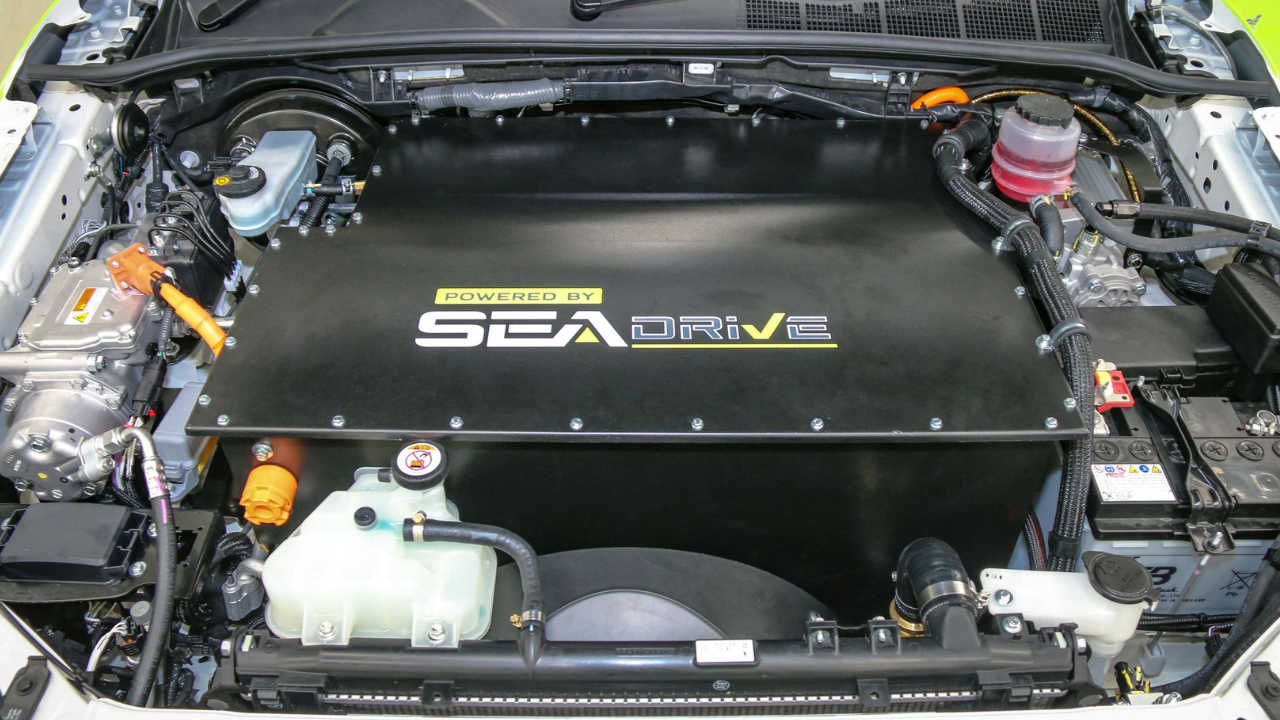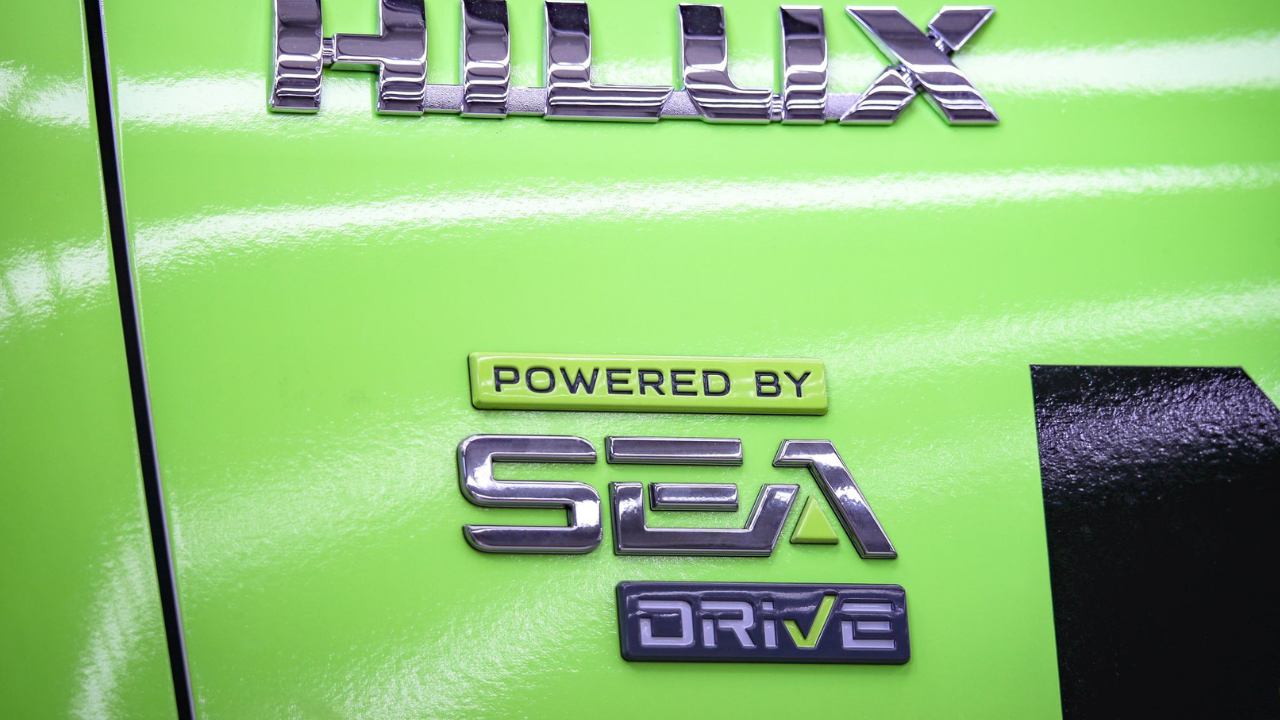The Mining Electric Vehicle Company, or MEVCO, made headlines this week with its order for 8,500 electrified Toyota Hiluxes and Landcruisers from Australian company SEA Electric. But why would the mining industry care about electric commercial vehicles?
There are a couple of reasons and, frankly, they’re very attractive ones, ranging from less moving parts to longer lifespans over diesel-powered rivals. And MEVCO is one of the companies that’s bringing the cars to the mining sites.
When I was speaking to Matt Cahill, the CEO of MEVCO, he told me that the company has already sold half of its 2023 allocation of vehicles – 500 units, with 1,000 for the full year (8,500 over the next five years) – and is confident that the other half will be gone by next week. He told me that Perth customers are “screaming for it”.
Cahill’s had a bit of experience in the world of sustainable energy and vehicle conversions. Previously, he was the president of Vivo Power in the U.S., and then moved on to be the executive director of Tembo ELV in the Netherlands, a company that was working on a similar electrified Toyota Landcruiser.

On Wednesday, Cahill said MEVCO was based in Australia, adding, “From our perspective, [MEVCO is] very much a global operation but with a very strong Australian focus at the moment.”.
At the time of the interview, Cahill was showing off the fleet of vehicles in Melbourne to mine site operators. Before hopping on the phone for the interview, he told me that he was showing off the electrified Hilux by driving it past the Australian Open, through Richmond and Brunswick. At one point in the interview, a customer apparently walked up to the window of his car and started to knock on the glass, wanting to go for a test drive.
But where did this company come from? How is it able to afford 8,500 vehicles, to the cost of about $1 billion?
SEA Electric has signed a Memorandum of Understanding with MEVCO, a leading systems integrator focused exclusively on electric light commercial vehicles in the mining industry.https://t.co/rCfi2VJWOV pic.twitter.com/mcC4CA9Pi3
— SEA Electric (@seaelectricev) January 17, 2023
What is MEVCO?
“We’re a systems integrator for electric light vehicles in the mining sector. That’s all we do. We’re not interested in other factors, we’re only interested in mining,” Cahill said.
“We’re not a builder of vehicles. What we’re doing is we’re bringing together the pieces that will make that successful for a mining company. For example, there’s a lot of change management involved, there’s a lot of changing processes, there’s a lot of training.”
Here’s how it works: MEVCO is a company that’s backed by the portfolio company Resource Capital Funds, through their innovation fund. Resource Capital Funds handles investments in the mining industry and operates on a global scale.
Through this, MEVCO is able to buy these vehicles over the next five years.
Speaking of those vehicles, they’re coming from SEA Electric, an Australian company with a production facility in Melbourne’s Dandenong South.
SEA Electric operates several dealerships across Australia, with a focus on trucks. The company’s fleet of vehicles is mostly comprised of electric-powered Hino trucks, which SEA Electric has renamed and rebadged with its own brand.
And this is what attracted MEVCO to the Aussie company.

MEVCO handles the sale and distribution of these vehicles to mining sites.
So what makes EVs so good for mining environments?
“As we did this evaluation of what technology was available, we landed on SEA Electric,” Cahill said.
“Their support and their engineering talent is unlike anything we’ve ever experienced. That’s really important to us.”
Cahill said the biggest part of this was the omission of a reduction box, or just the standard gearbox. Without the gearbox, Cahill says there’s less “jerky-jerky stuff”, with no gearshifting and instantaneous torque, similar to most battery electric vehicles.
“They’re coming from a big truck environment. They’re coming from an architecture that is high torque low speed, versus most everybody else in the market that’s high speed, low torque,” he added.
There are also the added benefits of not having a combustion engine, which is massively beneficial in a mining environment. There are less moving parts, less maintenance and less opportunities for something to go wrong.
And in a mining environment, where there are underground closed-in segments, exposed minerals and dust all over the site, these factors mean all the difference.
“From a worker perspective, working in a diesel environment is not as healthy. It’s just not,” Cahill added.
And of course, I did ask what seems like the obvious question: what about in coal mining or gas extraction environments? How would it look if the electric vehicles were to be deployed at fossil fuel sites? Well…
“That’s not our focus, to be very blunt,” Cahill said.
“The focus… in terms of where we see the greatest benefit for our customers is in the iron ore industry or silver, gold or precious metals. That’s where we see it.
“Pretty much all the major miners of the world have committed to become carbon zero within very, very short time frames, in the scheme of things… That’s a very significant change and an incredibly large investment.”
So this shift to electric vehicles in mining represents two things: it represents the health and safety of workers at mining sites and it represents a large shift to electrification, at the very beginning of the production cycle.
“We’re very very focused on those companies that are going to do full suite replacements and that are going to order very large volumes of trucks,” he said.

The next step for MEVCO
Like we said earlier, MEVCO is set to order 8,500 of these vehicles over five years, which is 1,700 units per year. It’s likely that SEA Electric may need to expand its business to keep up with this volume, as it only has the one Dandenong South facility.
“I think what’s gonna happen here is that we would have sold through to the end of 2024 probably by the end of February, beginning of March,” Cahill said.
“Where mining has a huge advantage is that you’ve almost got a closed area where you’ve got a limited range of operation, basically, in a mine, and you’ve got infrastructure that supports lots of various processes, whether it be a smelter, extraction, whatever else.
“You’ve really typically got a good power source that can be used to support the infrastructure of the mine”
Even in mining, it’s exciting to see the shift to electrification take shape. I just can’t shake the image of seeing one of these things at a coal mine.
